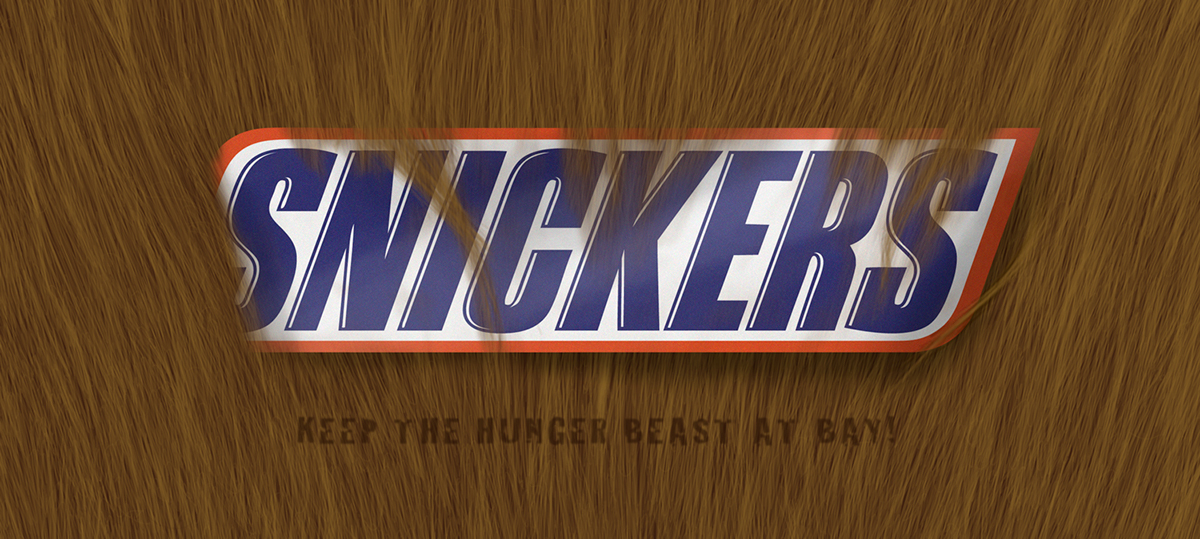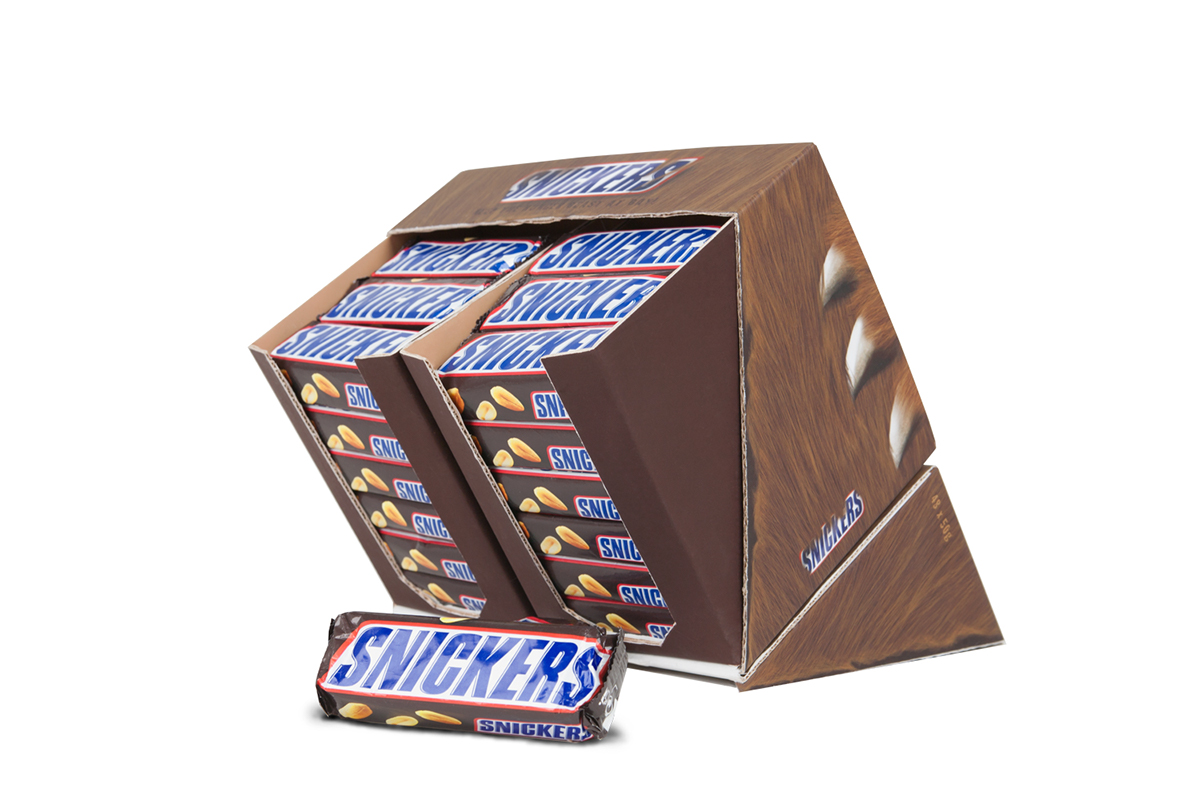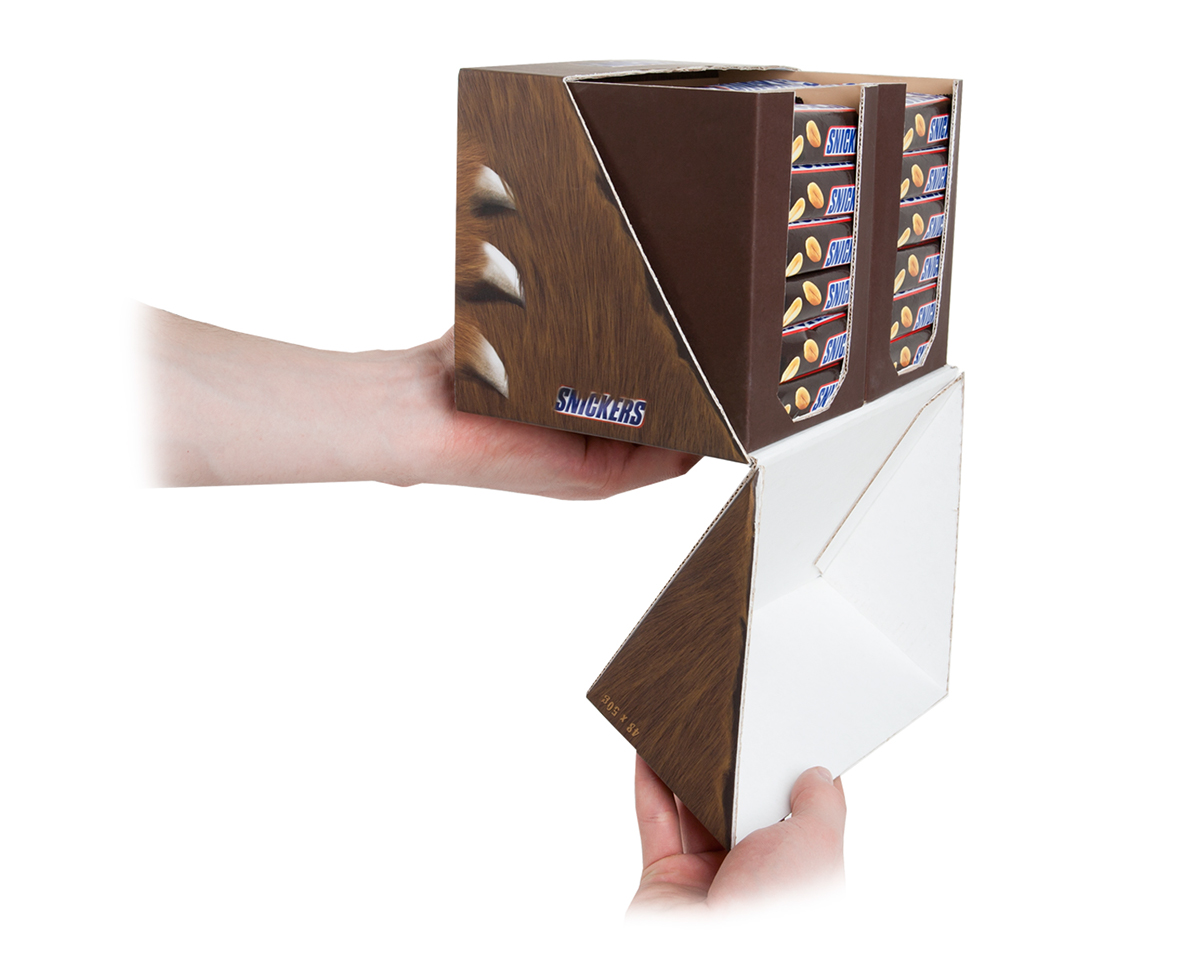
Student Starpack Silver Star Award & DS Smith Sponsored Award Joint 3rd Prize winner
Judges’ Comments
Great consideration given to the presentation of the product/shelf impact. There are some issues with the stability (when full can tumble forward) but good graphics and clear boards.
- Peter Redfearn, Design Director, DS Smith Packaging & Simon Saunders, Regional Design Manager, DS Smith Packaging South West
Great consideration given to the presentation of the product/shelf impact. There are some issues with the stability (when full can tumble forward) but good graphics and clear boards.
Demonstrated a good understanding of our difficult brief offering a practical and effective solution.
- Peter Redfearn, Design Director, DS Smith Packaging & Simon Saunders, Regional Design Manager, DS Smith Packaging South West
Student Starpack awards 2011: Brief [E] Self-merchandising unit for Major supermarketsclick to view the brief

ISSUES - Research findings
Looking into the range of merchandising units in the confectionery section of the retail environment shows that most brands are using similar forms. These consist of a basic box shape that has a perferated top which is torn off to reveal the product. Though this type of unit does do its job to some extent, there are quite a few ways in which it does not meet, the ever increasing, criteria set by the competitive market.
One issue with current units is that, as they empty, they lose a lot of their shelf impact as the remaining product is hidden by the sides of the unit. In todays market there is a high demand for the mantaining of shelf impact as this is partly what draws consumers to the product. There is also nothing bringing the product forward from the back of the unit, therefore again the product is not as visible as it could or should be.
Another issue is that the units are held together with alot of glue; making it difficult if not imposible for store personnel to flatten them for disposal.
Lastly the oppening mechanisms of the units often leave them looking ugly. This is mainly because of left over cardboard sticking out and damaged graphics.
One issue with current units is that, as they empty, they lose a lot of their shelf impact as the remaining product is hidden by the sides of the unit. In todays market there is a high demand for the mantaining of shelf impact as this is partly what draws consumers to the product. There is also nothing bringing the product forward from the back of the unit, therefore again the product is not as visible as it could or should be.
Another issue is that the units are held together with alot of glue; making it difficult if not imposible for store personnel to flatten them for disposal.
Lastly the oppening mechanisms of the units often leave them looking ugly. This is mainly because of left over cardboard sticking out and damaged graphics.
SOLUTIONS - The Hunger Beast Concept
This concept for a SNICKERS merchandising aims at overcoming the issue mentioned; mainly concentrating on the shelf impact of the unit and keeping the product as visible as possible at all times. Keeping in mind that the shape and logistical demand of snickers the basic box shape was kept as the basis for the unit.
To tackle the issue of visibility the opening lid is shaped to fold around to the back to become a slanted base. This slant turns its open face towards the consumer, thereby offering its contents to the consumer. The unit litterally pops out from its competitors. The slant also causes the product to move toward the front as the unit empties, which increases the time that the unit has a positive shelf impact. The structure of the unit allows for a graphical element, in this case the SNICKERS logo, to be placed in line with the product achieveing an ideal ad space for the brand.
On the issue of flattening, the concept does not attempt to eliminate glue, but instead it attempts to optimize and minimize the glues role in holding the unit together. The two glue areas on bottom create a tention holding the unit together, and when released allow the unit to easily be flattened and disposed.
To tackle the issue of visibility the opening lid is shaped to fold around to the back to become a slanted base. This slant turns its open face towards the consumer, thereby offering its contents to the consumer. The unit litterally pops out from its competitors. The slant also causes the product to move toward the front as the unit empties, which increases the time that the unit has a positive shelf impact. The structure of the unit allows for a graphical element, in this case the SNICKERS logo, to be placed in line with the product achieveing an ideal ad space for the brand.
On the issue of flattening, the concept does not attempt to eliminate glue, but instead it attempts to optimize and minimize the glues role in holding the unit together. The two glue areas on bottom create a tention holding the unit together, and when released allow the unit to easily be flattened and disposed.
Please note that the SNICKERS brand was only used as an example of possible branding for the purposes of the Starpack brief. The SNICKERS brand is not affiliated with this project.

The Hunger Beast Concept also awakened a new graphical marketing idea for the SNICKERS brand: The hairy hunger beast which is kept at bay by eating SNICKERS.
OPENING






SHELF LIFE

The units are placed on the shelf one behind the other. The back unit leans on the back of the front unit, thus adding extra support and eliminating the minor issues of stability.


When empty, a message encourages consumers to ask the store personnel to refill their stock.
RETAIL ENVIRONMENT

DISPOSAL
Pulling the two tabs on the bottom of the unit releases the packaging to be flattened completely for disposal.




THE BOARDS



